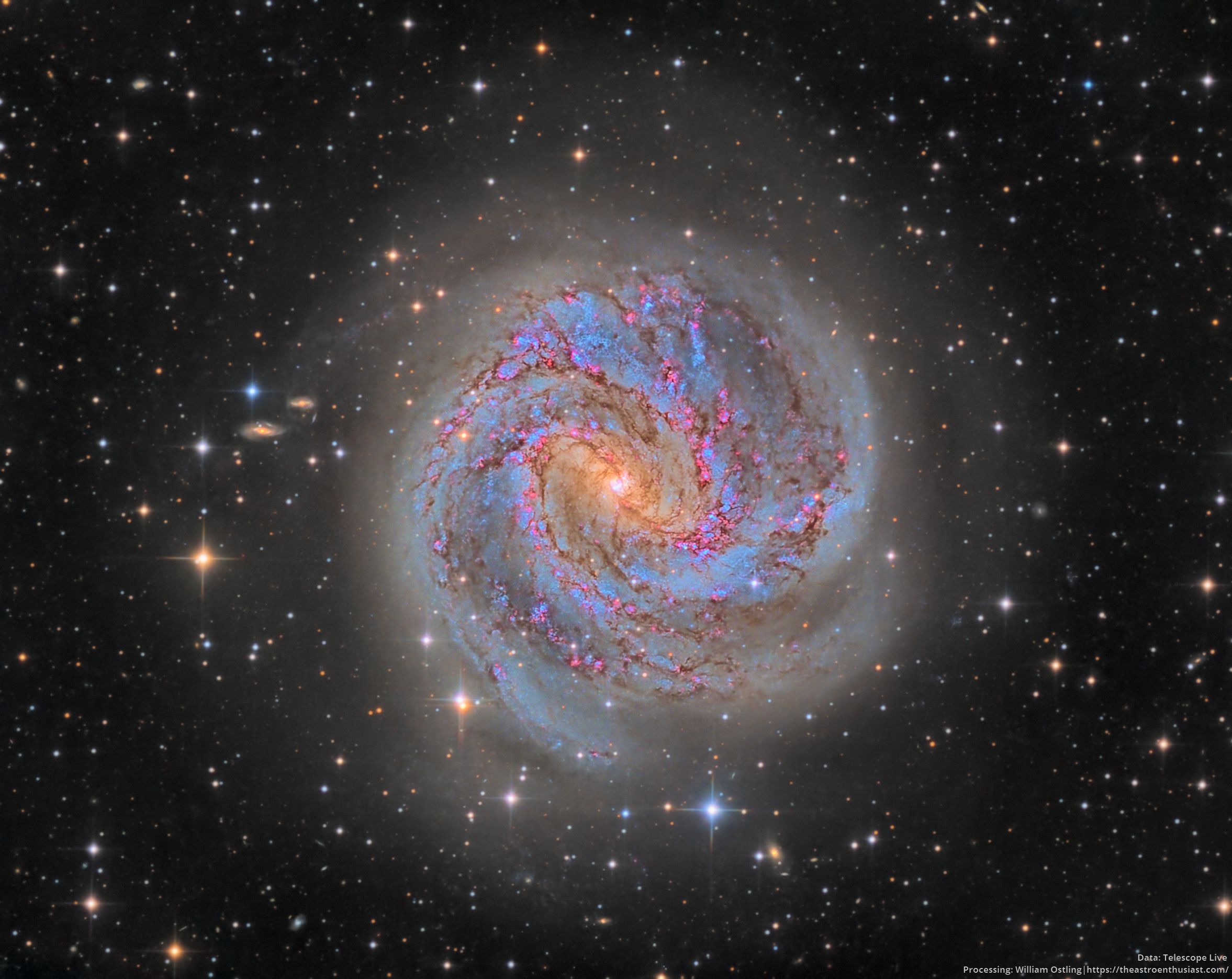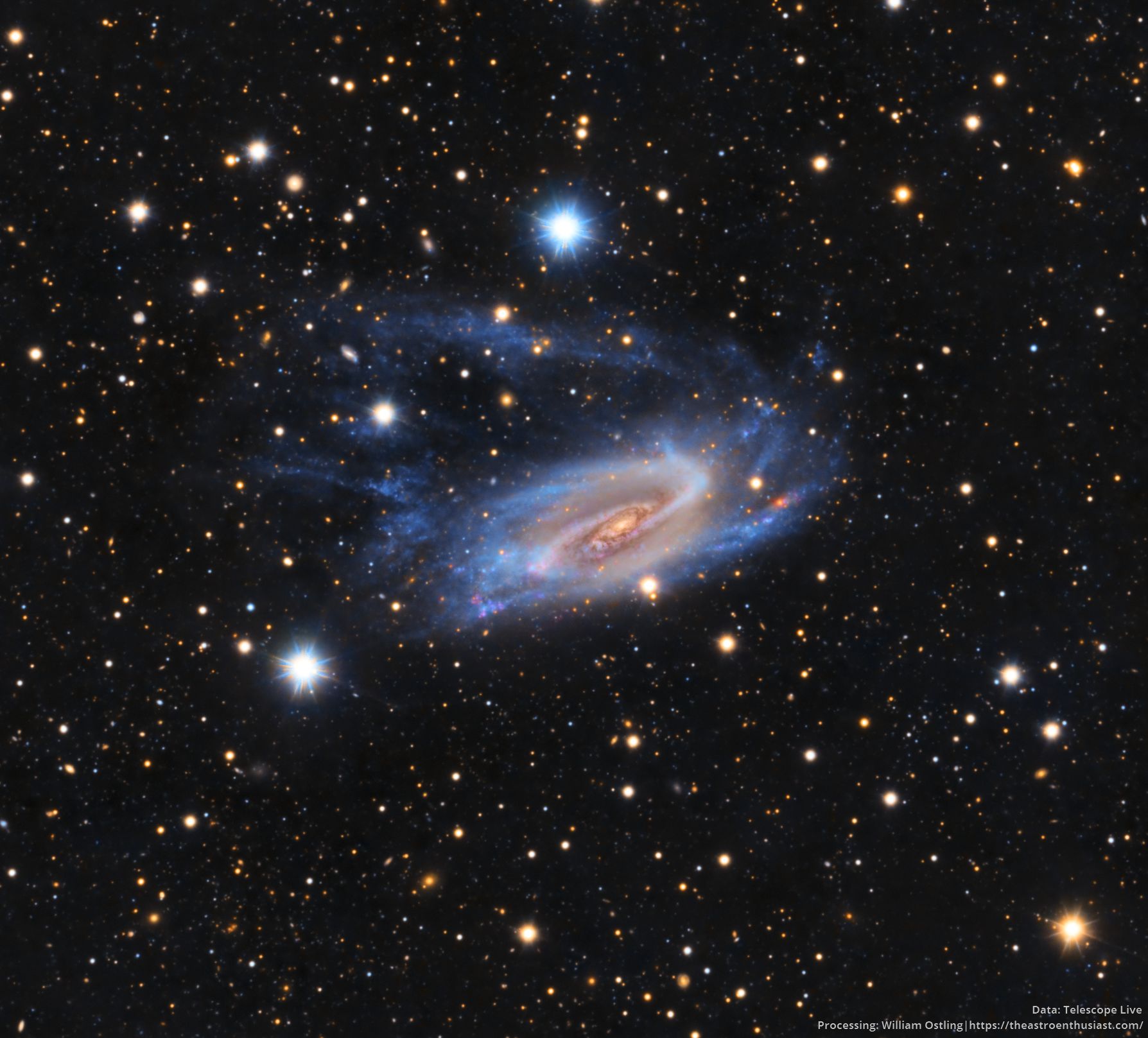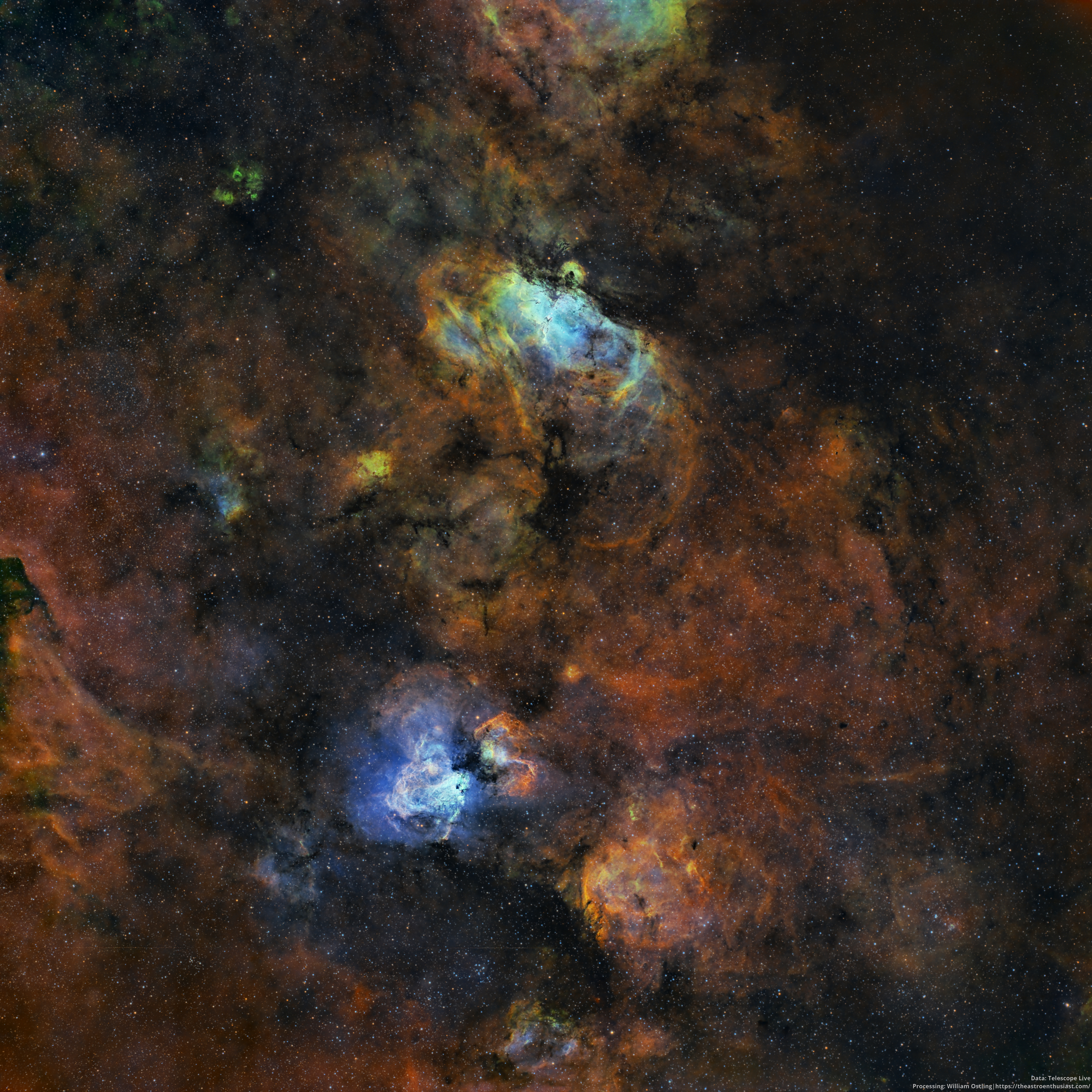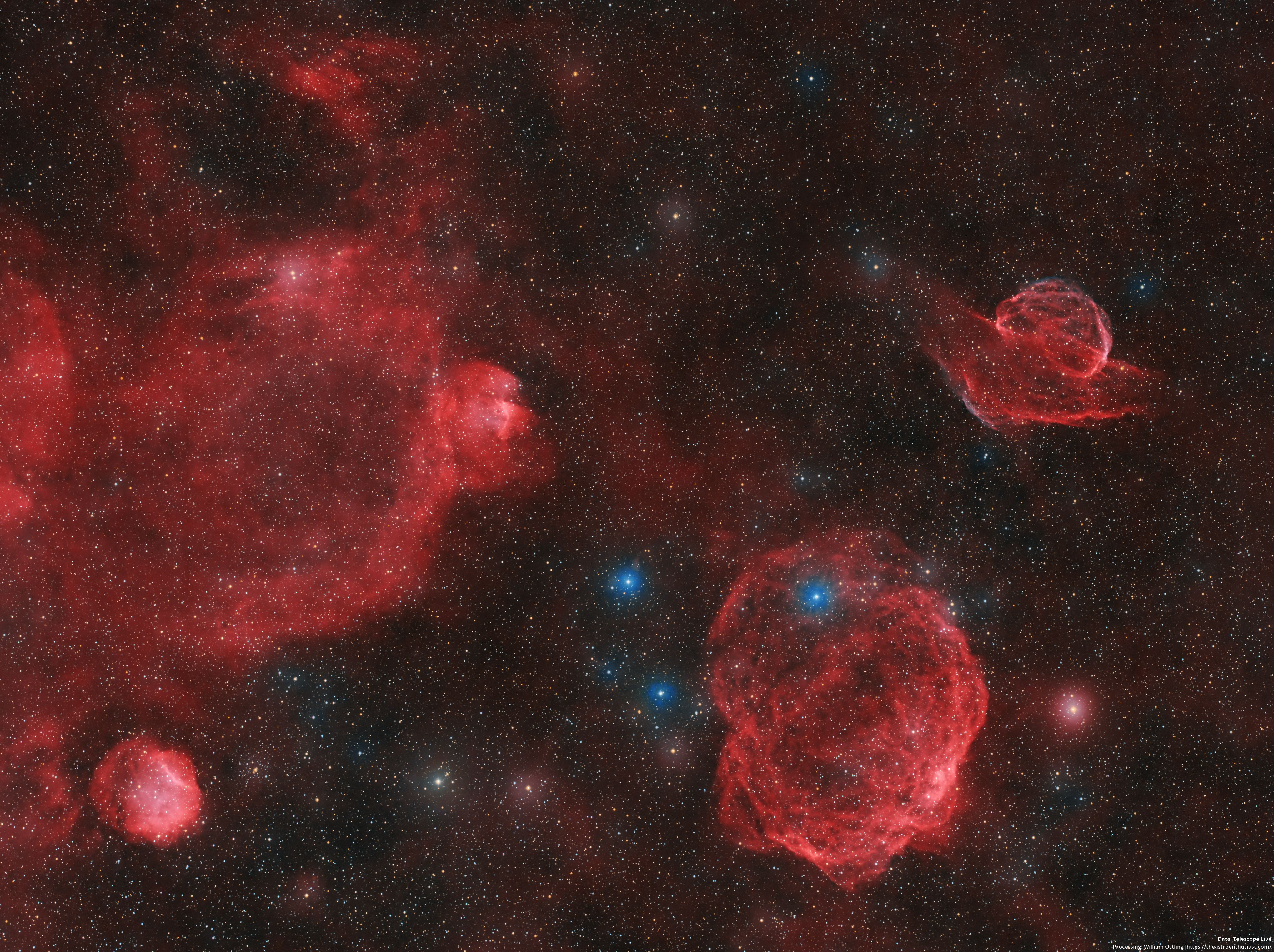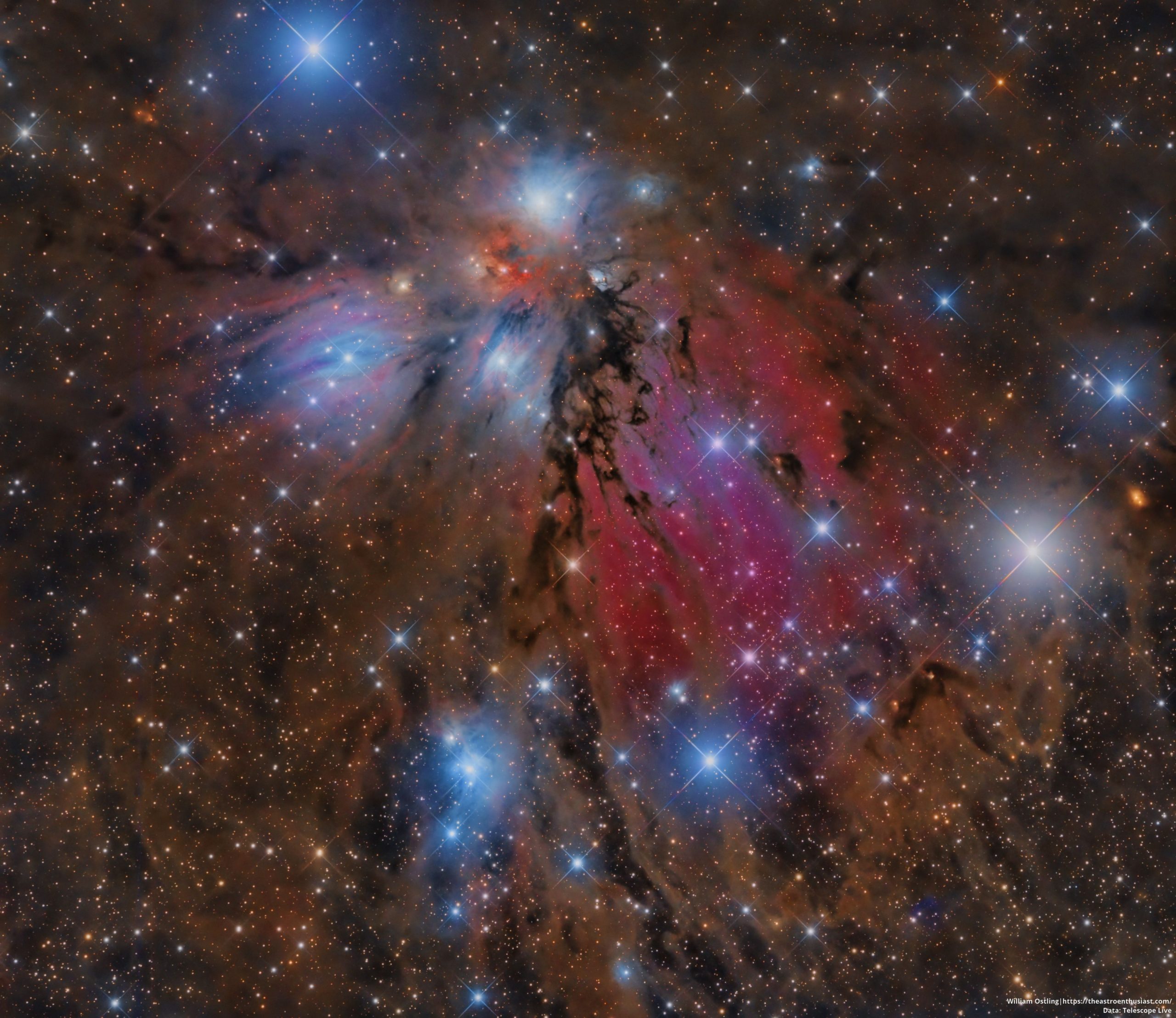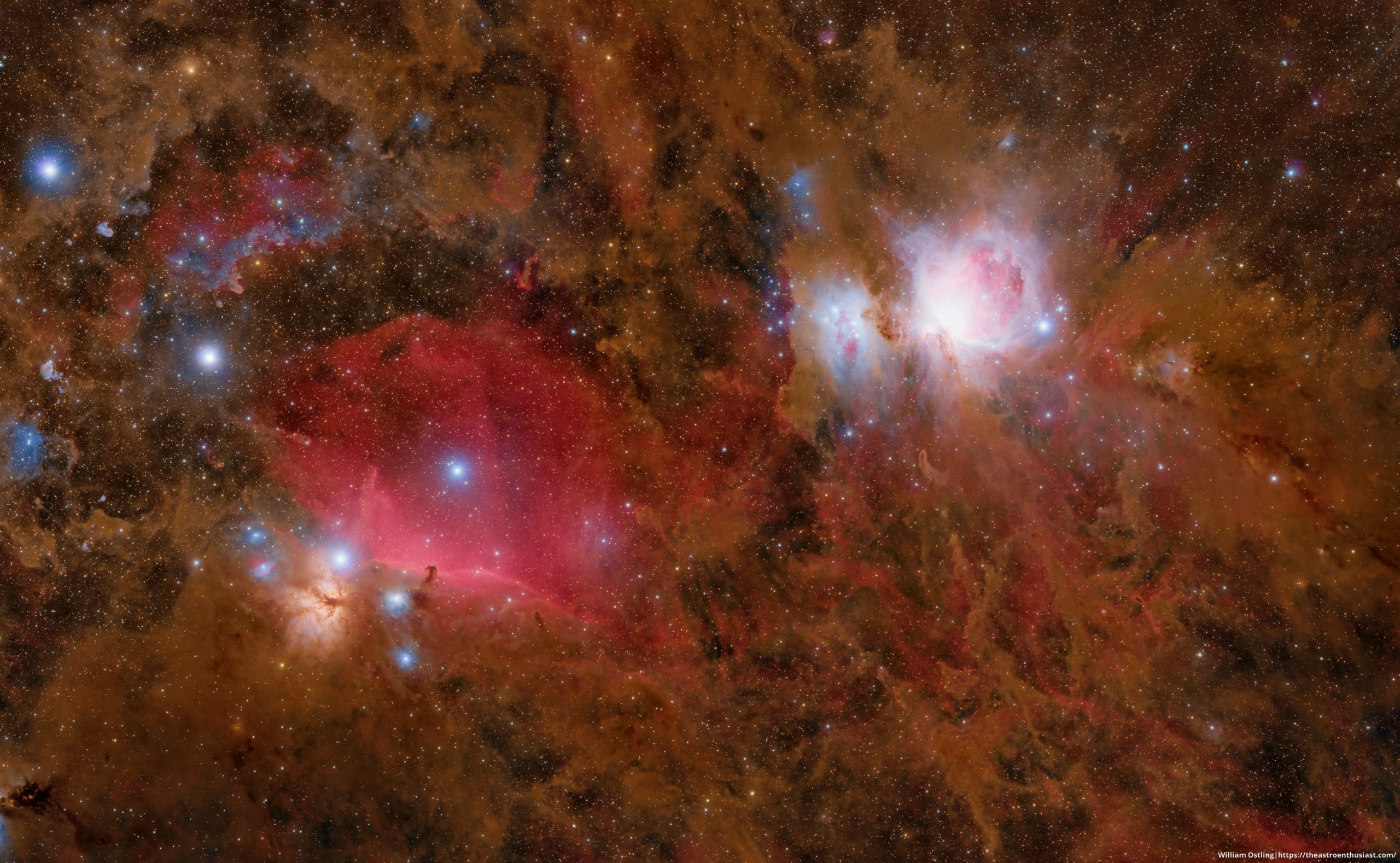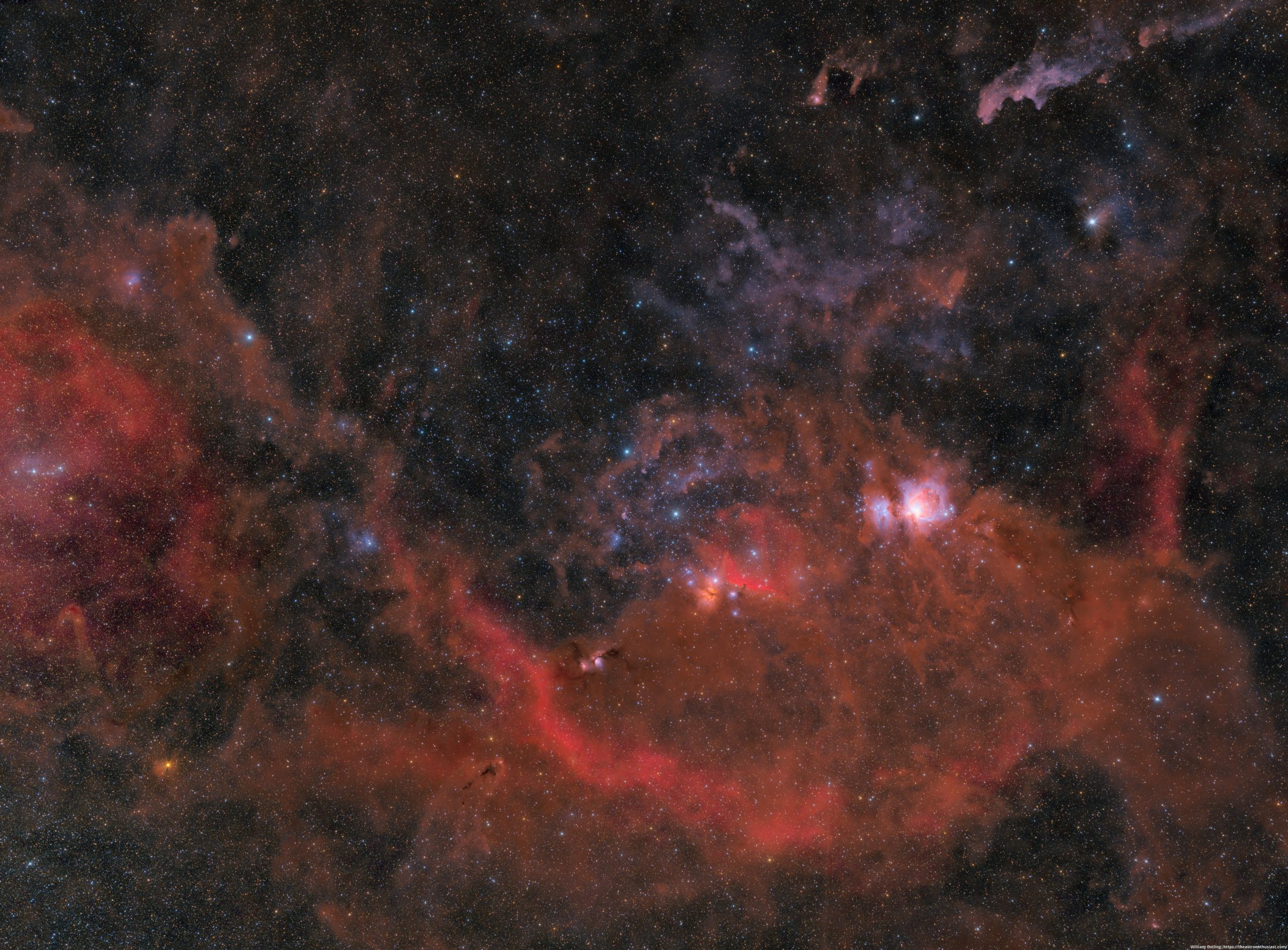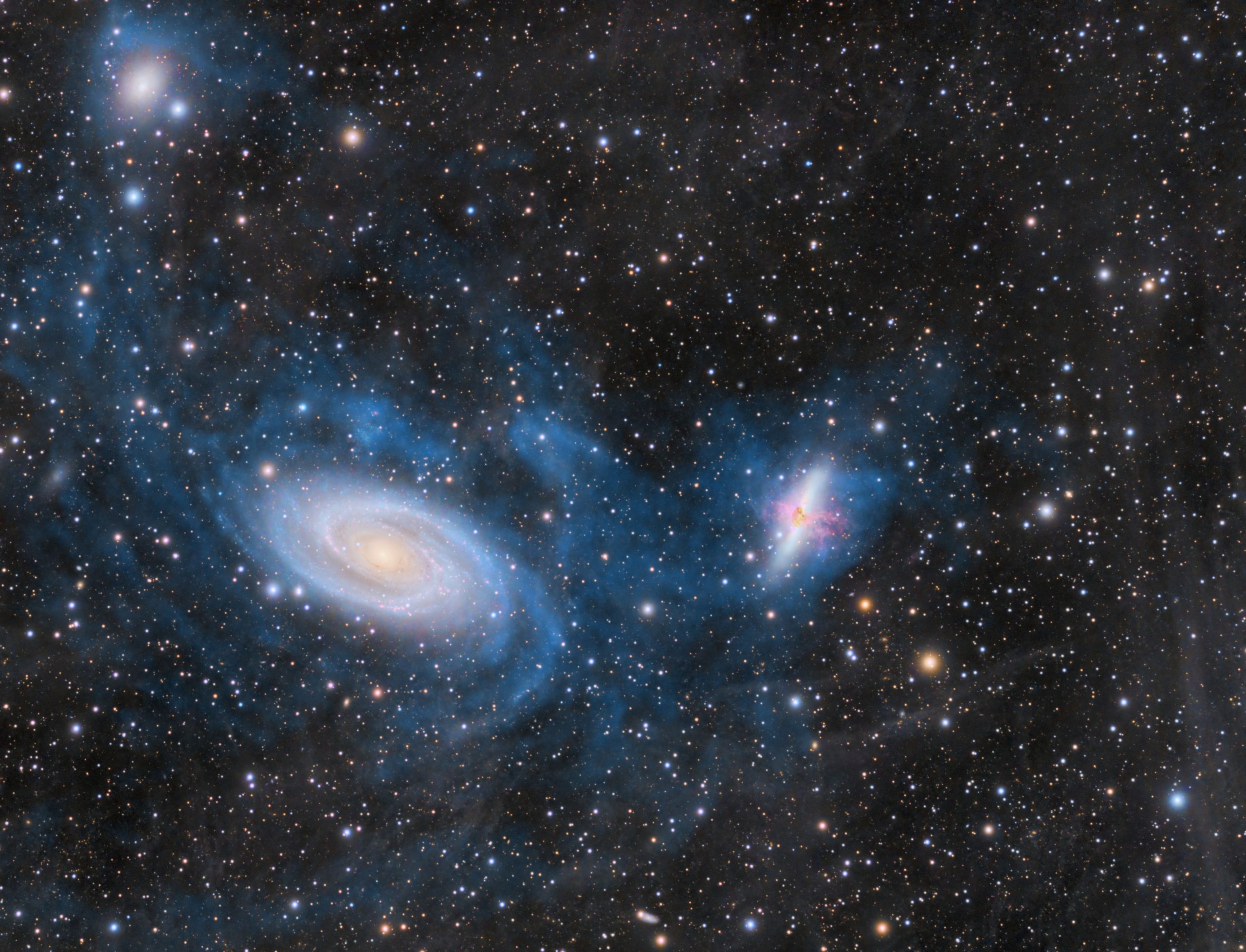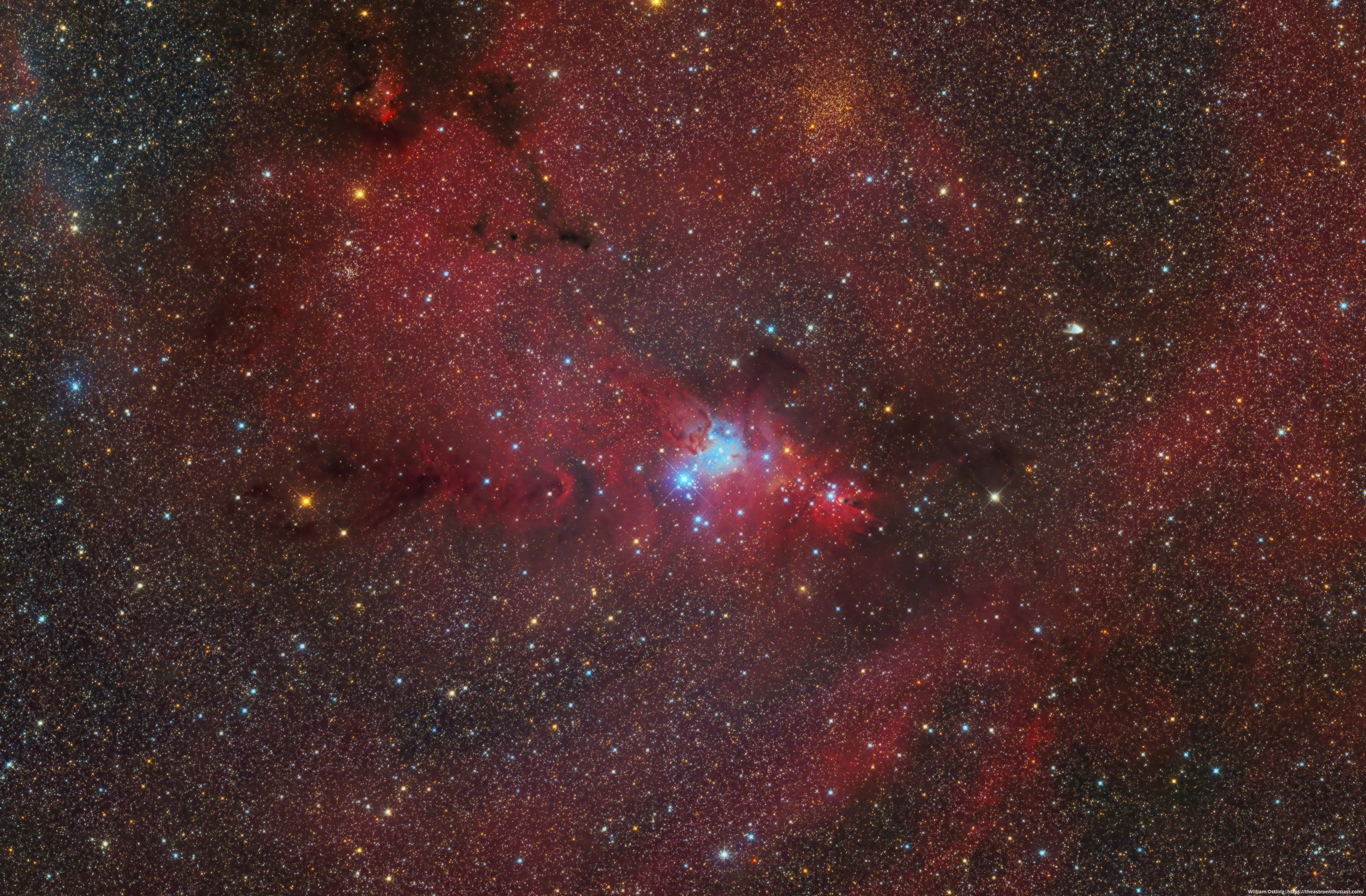Peering into the faint outer halo of Messier 83
This is another image from the archives of telescope live – the spiral galaxy M83. I noticed while processing that this dataset was deep enough to include a fainter outer halo that I couldn’t find, so I wanted to show as much of this new halo as I could. It was tricky to balance the brightness of the core with the brightness of the outer halo, but using some pixelmath tricks in conjunction with HDR and GHS I think I was able to do a pretty good […]
Read more